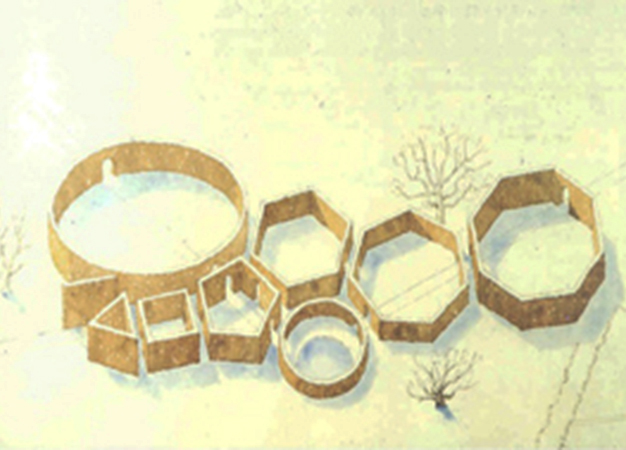blog
Whatever happened to the garden? “The art of the garden is dead,” pronounced the French garden designer Achille Duchêne in 1937. Was it? And is it now? If we take the thriving industry around experience and lifestyle, where the garden coexists happily with watches, kitchens and interiors, it is alive and kicking. But it is having a hard time as the most basic expression of landscape and nature, within the profession of landscape architecture. Although nobody denies its roots in garden design, ever since landscape architecture began to settle as a grown-up profession, the position of the garden has been under attack. The garden as a design problem seemed unable to stand its ground against the large issues of regional and recreation planning, dealing with the social and environmental consequences of advancing urbanization.
But of course it is not a matter of the garden like a Calimero as opposed to the ‘large issues’. The skill of designing a garden – the ideals, the art and the craft – should be part and parcel of the way of addressing the large issues.
In 1945 the Danish landscape architect C. Th Sørensen designed the Musical Garden for an urban park in Horsens, at the surface a sterile exercise in geometry, but in reality an extraordinary range of spatial variations. Sørensen himself described the design as “the best I have designed, something that gives the mind an inexplicable joy.” Clearly he saw gardens as an art form, but he translated these geometric exercises also into large landscape projects, like the Kongenshus Memorial Park (1945-53). In the design his analysis of the natural basic forms of the heath landscape concurs with the visual power of the geometric forms. The garden as an experiment for landscape architecture.
And what about the baffling similarity between the axial composition of Vaux-le-Vicomte (1656) and the 19th-century Paris of Haussmann? Clearly the lessons learned within the safe playing ground of the garden were taken well into account when the need arose to control the grim reality of traffic and hygienic problems and violent civic uprisings, following the advice of Abbé Laugier, who said in 1775: ‘Let the design of our parks serve as the plan for our towns.’ The design for Versailles (1661) gives a nice insight into how the transition was made from garden design into urban design.
I am aware that the present day metropolitan landscape is characterized more by instable and dynamic processes than by the compositional logic of the classical city. System theory models seem to be better applicable than rational plans and spatial designs. However, if we would apply these models and allow the metropolitan landscape to arise as a logical consequence of integrating sustainable systems and processes, the spatial quality of our living environment would get lost in the process.
The core business of a landscape architect will always be the creation of spatial compositions, however large the shifts in context and problematique, and what better laboratory and experiment is there then the garden? A laboratory other design professions don’t have. We are lucky to have this, so let’s start making better use of it.
in HowDoYouLandscape blog d.d.20-02-2012.
